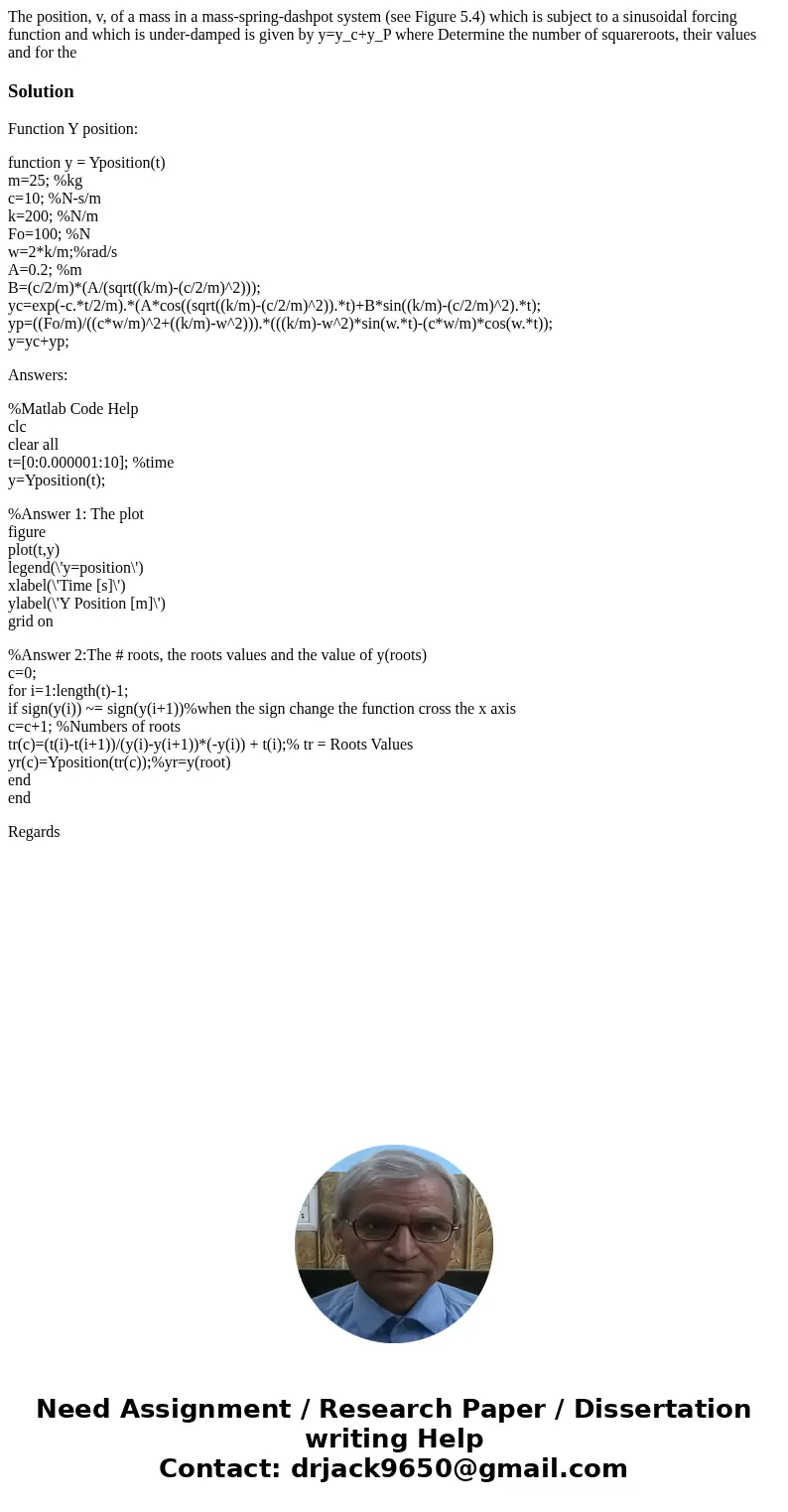The position v of a mass in a massspringdashpot system see F
Solution
Function Y position:
function y = Yposition(t)
m=25; %kg
c=10; %N-s/m
k=200; %N/m
Fo=100; %N
w=2*k/m;%rad/s
A=0.2; %m
B=(c/2/m)*(A/(sqrt((k/m)-(c/2/m)^2)));
yc=exp(-c.*t/2/m).*(A*cos((sqrt((k/m)-(c/2/m)^2)).*t)+B*sin((k/m)-(c/2/m)^2).*t);
yp=((Fo/m)/((c*w/m)^2+((k/m)-w^2))).*(((k/m)-w^2)*sin(w.*t)-(c*w/m)*cos(w.*t));
y=yc+yp;
Answers:
%Matlab Code Help
clc
clear all
t=[0:0.000001:10]; %time
y=Yposition(t);
%Answer 1: The plot
figure
plot(t,y)
legend(\'y=position\')
xlabel(\'Time [s]\')
ylabel(\'Y Position [m]\')
grid on
%Answer 2:The # roots, the roots values and the value of y(roots)
c=0;
for i=1:length(t)-1;
if sign(y(i)) ~= sign(y(i+1))%when the sign change the function cross the x axis
c=c+1; %Numbers of roots
tr(c)=(t(i)-t(i+1))/(y(i)-y(i+1))*(-y(i)) + t(i);% tr = Roots Values
yr(c)=Yposition(tr(c));%yr=y(root)
end
end
Regards

 Homework Sourse
Homework Sourse